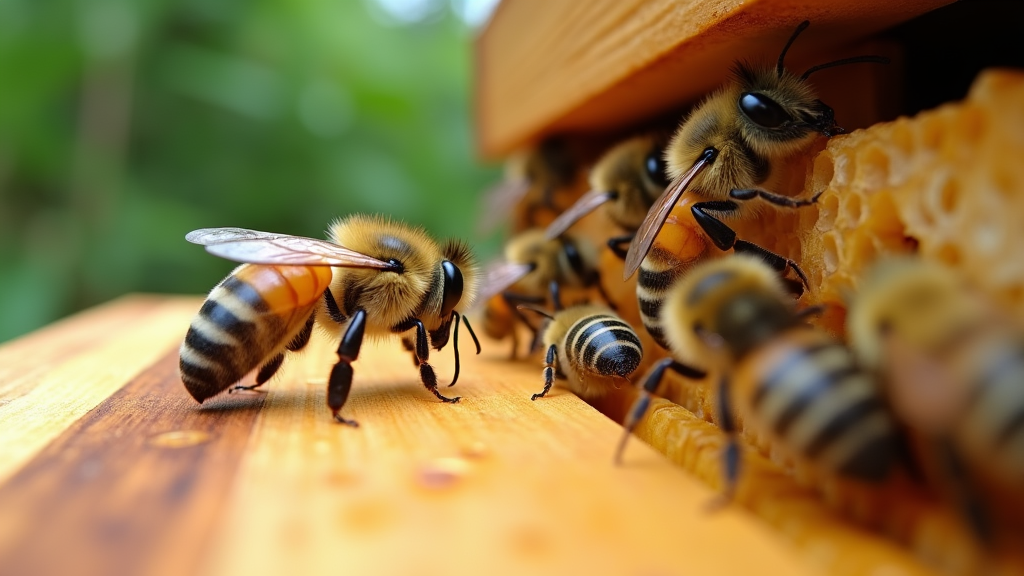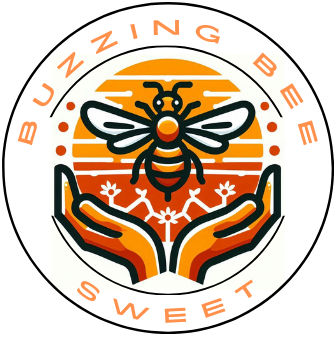Beekeeping during the summer is an adventure for new and seasoned beekeepers alike. Keeping bees happy, healthy, and productive through the heat calls for some know-how and a few clever tricks. From hive management to honey harvests, practical tips can help your colony thrive all summer long. I’m sharing my top summer beekeeping tips—including lessons I’ve learned the hard way—to help both new and experienced beekeepers get more out of the season.

Why Summer Hive Management Matters
Summer is the busiest time in any bee colony. Bees are out foraging at full speed while the queen is laying eggs constantly. All that activity means hives change quickly and need close monitoring. With rising temperatures, heat, humidity, and an abundance of nectar can make or break a colony’s productivity. Learning what to look for, and when to step in, can prevent problems like swarming, overheating, or pests getting out of hand.
Summer hive management is really about staying ahead. When I first started, I underestimated how fast things build up inside the hive. A single week can mean the difference between a gentle, manageable colony and a crowded, cranky one ready to swarm. Spotting trouble early and knowing a few reliable tricks makes a big difference for bees and beekeepers alike.
Getting Your Hive Summer Ready
Prepping your hive before summer heats up requires some observation and basic maintenance. Here’s what I always check as the temperatures rise:
- Ventilation: Make sure your hive can breathe. High temps can make things muggy and overheat the brood. I like using screened bottom boards or propping up the outer cover a bit to let hot air escape.
- Shade and Airflow: Hives in direct sunlight can get extremely hot. If possible, move hives to locations with afternoon shade or set up a shade cloth for an easy fix.
- Entrance Size: A wider entrance lets bees fan out hot air more efficiently. Some beekeepers switch to larger entrance reducers or remove them completely for summer.
Keeping track of these basics gives your bees a head start on a smooth summer. It might be tempting to leave them alone, but a little preparation now pays off when the temperature climbs.
Essential Summer Beekeeping Tasks
I never skip these jobs during summer—even if things look fine at first glance. Staying consistent keeps surprises down:
- Regular Inspections: Checking hives every 7-10 days helps you spot overcrowding, swarm cells, or pests early. I always look for eggs, larva, capped brood, and food stores on every frame.
- Adding Supers: Bees can quickly fill honey supers during a good nectar flow. I add supers when frames are nearly full, sometimes even earlier if the season is strong.
- Monitor for Swarms: Swarms catch even experienced beekeepers off guard. Signs include crowded brood frames, queen cells, and a sudden dip in bee numbers. Removing queen cells and giving more space helps minimize this risk.
Keeping Bees Cool and Happy
Heatwaves aren’t just uncomfortable for people; bees feel the heat too. Overheating can stress out the queen and even kill developing brood. Here’s what helps my colonies handle the heat:
- Water Source: Bees need water to help cool the hive. I set out shallow dishes of water with lots of pebbles, so bees can land safely and drink easily.
- Sun versus Shade: Moving hives isn’t always easy, but if you can give them afternoon shade, it can make a major difference. I’ve also used a tarp stretched between stakes for some quick relief.
- Ventilation Tricks: Using screened inner covers and propped-up lids keeps air moving. Even just cracking the inner cover a bit with a twig helps on the hottest days.
Happy, stress-free bees are more productive and less likely to abscond suddenly when temperatures soar.
Common Challenges and How to Handle Them
Even if you’re thorough, summer can throw you some tough problems. Here are the most common issues and my favorite fixes:
- Swarming: Bees swarm when they’re crowded or feel a new queen is needed. I prevent this by making sure there’s always enough space and removing queen cells before they’re capped.
- Mite Infestations: Varroa mites love hot weather too. I do quick checks—like the sugar shake method—and treat after honey harvest using nonchemical options if possible.
- Robbing: Hungry bees from other colonies sometimes try to steal honey, especially during dry periods. Reducing entrances or adding robbing screens helps cut down on fights at the entrance.
- Wax Moth and Small Hive Beetle: Pests like these can devastate weaker hives. Strong colonies usually fend them off, but keeping the hive tidy and inspecting often helps you catch problems early.
Swarming Prevention
Losing half your bees to a summer swarm stings—literally and figuratively. When I spot early preparations like queen cups or see the hive getting packed, I’ll split the colony or move a frame or two of brood to a weaker hive. This usually gives the bees more breathing room and settles down colonies prone to swarming.
Staying Ahead of Mites
Summer mite populations can spike fast. I take mite counts every few weeks using a powdered sugar shake or alcohol wash. When the numbers get high, I treat with techniques that are honey-safe, such as screened bottom boards or removing drone brood to limit the mite population.
Harvesting Honey: When and How
The highlight of the summer for most beekeepers is harvesting honey. Wait until at least 80% of the honey in your supers is capped. Capped honey is fully dried and stores well. I usually pull frames early in the day, gently brush off the bees, and move the honey to a shaded, bee-free spot for extraction.
After the harvest, always double-check that you’ve left enough stores for your bees. In areas with summer dearths (when flowers fade and nectar dries up), keep feeding options on hand. Sometimes giving the hive a little extra helps them recover from major harvests or drought.
Quick Guide: Top Summer Beekeeping Tips
- Inspect Weekly: Stay on top of hive conditions to avoid trouble.
- Manage Hive Space: Add supers or split overcrowded hives before it gets critical.
- Monitor for Pests: Check for mites, beetles, or moths regularly to catch issues early.
- Provide Water: Set out shallow dishes with stones or sticks—easy water access matters.
- Harvest at the Right Time: Extract honey only when most is capped and ready for storage.
Doing these basics helps keep both bees and beekeepers happy all season long.
Handy Tools and Equipment for Summer
Some gear is always by my side for summer hive checks. Essential tools like a sturdy hive tool, a smoker stuffed with mint or herbs to calm the bees, and a bee brush simplify every inspection. I also have extra supers, screened bottom boards, and water containers nearby. These small additions ease your workload and lower stress on your bees.
- Protective Gear: Lightweight ventilated bee suits help keep me cool while protecting from stings, making a huge difference on hot days compared to standard suits.
- Spare Hive Parts: Having an extra super or even a full box ready is extremely helpful for surprise swarms or needed splits.
Remember to keep your smoker, fuel, and hive tools in one place so they’re easy to grab. A small kit for fixing broken frames or patching gaps comes in handy too.
Frequently Asked Questions
Question: How often should I inspect my hive in summer?
Answer: For most climates, checking every 7 to 10 days works well. If conditions are changing fast—like during a big nectar flow or when swarming signs show up—drop by more often.
Question: What’s the best way to prevent summer swarms?
Answer: Add more space before the hive gets crowded and remove queen cells as soon as you see them. Splitting colonies early helps keep everything calm and reduces the urge to swarm.
Question: Do bees need extra feeding during summer?
Answer: Usually, bees forage enough in summer. But during drought or right after a big honey harvest, offer sugar syrup or pollen patties if food gets low to help them bounce back.
Key Takeaways for a Productive Summer in the Apiary
Summer offers both big opportunities and some tough challenges for beekeepers. Frequent inspections, managing space wisely, and ensuring your bees have everything they need will boost honey production and keep colonies strong. Even beginners can have a smooth season with these basics and by keeping an eye out for important changes. Each summer teaches you something new, so jot down your experiences in a notebook—you’ll appreciate this record as your beekeeping skills grow.

Hi Mats, thanks for sharing this comprehensive article on summer beekeeping tips!
The key takeaways for me were the importance of regular hive inspections every 7-10 days, proactive heat management through ventilation and shade, and the critical role of swarm prevention techniques. I especially appreciated the practical advice on essential equipment and the problem-solving tips for common summer challenges.
The article does an excellent job of catering to both beginners and experienced beekeepers, with clear explanations and more advanced insights. The personal experiences and lessons learned added a relatable touch.
Here’s a question to spark some discussion: What’s been your biggest “aha” moment or lesson learned when it comes to summer beekeeping? I’m always eager to hear about other beekeepers’ experiences and insights!
Looking forward to hearing your thoughts and continuing the conversation.
Happy beekeeping!
Eric